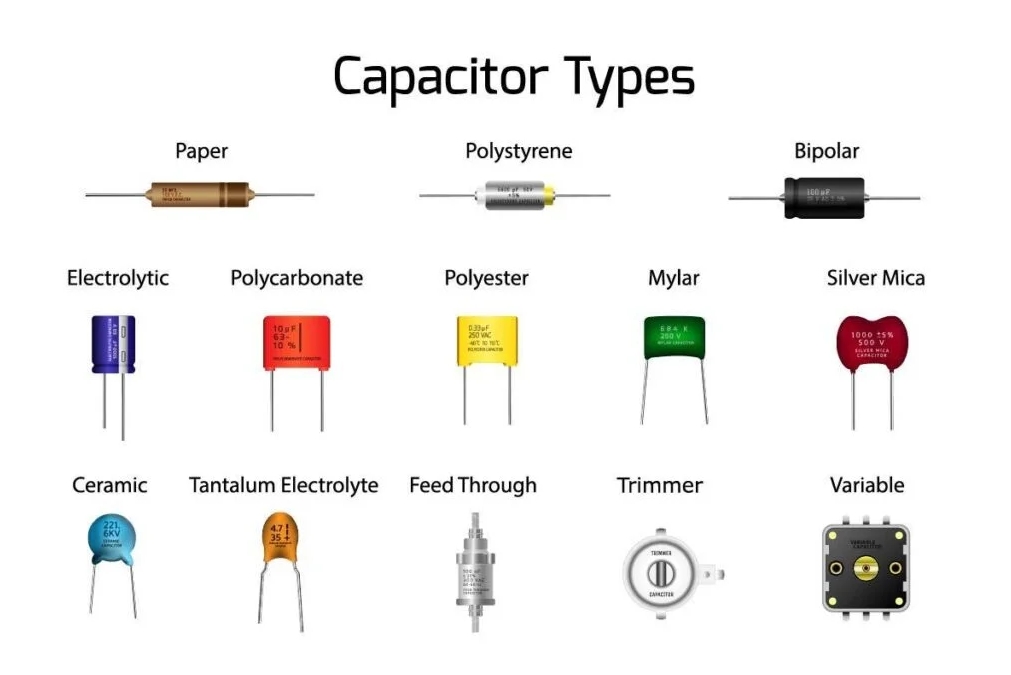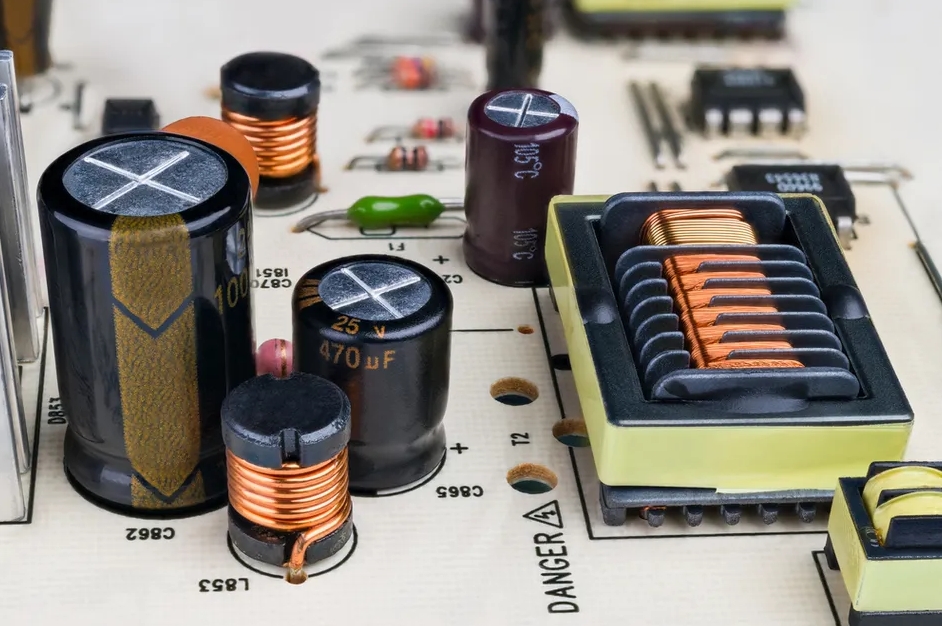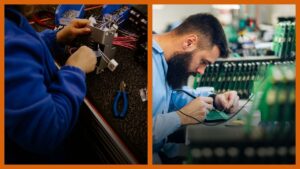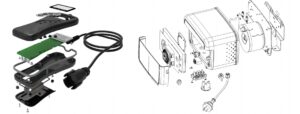Capacitors are a big deal in electronic circuits, and knowing about their polarity is important so your stuff doesn’t break and it’s safe.
Quick Leads
Capacitor Polarity: What You Need to Know for Safe Circuit Design
Polarized capacitors, like electrolytic, tantalum, and supercapacitors, have to be put in the right way so the positive and negative parts are in the right spots. If you put these capacitors in the wrong way, they can get too hot, break, or even blow up. We’re going to talk about how to know what the polarity is for a capacitor, why it’s important, and what happens if you put a capacitor in the wrong way.
If you’re an electronics engineer, a PCB designer, or someone who’s really into this stuff, this article will help you not mess up and make your circuits better.
What is Capacitor Polarity?
Capacitor polarity refers to the orientation of the positive (anode) and negative (cathode) terminals in polarized capacitors. Unlike non-polarized capacitors (such as ceramic or film capacitors), which can be connected in any direction, polarized capacitors must be connected with the correct polarity to function properly. These capacitors are used in a variety of applications, including power supplies, audio circuits, and motor control circuits.

How to Identify Capacitor Polarity on Different Types of Capacitors
There are a few ways to figure out the polarity of capacitors, especially for the ones that have to go in the right way, like electrolytic, tantalum, and supercapacitors:
- Check for a “+” or “-” symbol: Most capacitors will have a “+” symbol near the positive terminal or a stripe indicating the negative terminal.
- Look at the pin lengths: The longer pin indicates the positive terminal, and the shorter pin represents the negative terminal.
- Inspect for a stripe or arrow: Many capacitors, especially electrolytic types, have a stripe or arrows on the body pointing to the negative lead.
- Use a multimeter: When markings are unclear, you can test polarity with a multimeter, as explained in detail below.

PCB Markings for Capacitor Polarity
When you’re working with PCBs, look for marks that show you which way the capacitor should go near where you put it on the board. Usually, there’s a “+” sign on the board that shows you where the positive part should go, and the negative part might have a shaded part or a stripe. If you follow these marks, you’ll put the capacitor in the right way when you’re putting stuff together.

Does Capacitor Polarity Matter for Non-Polarized Capacitors?
Polarized capacitors have to go in the right way, but non-polarized capacitors like ceramic and film capacitors can go in either way. These capacitors are used a lot in circuits that use high frequencies and in places where you don’t have to worry about which way the capacitor goes. It’s important to know when to use polarized capacitors and when to use non-polarized capacitors based on what your circuit needs.
What Happens If You Connect a Capacitor Backward?
Connecting a polarized capacitor in reverse can lead to several serious issues:
- Breakdown of the dielectric: The stuff inside the capacitor can break, and that can make the capacitor leak and get too hot.
- Component damage: After a while, the capacitor will get hot, and in really bad cases, it can blow up or catch on fire.
- Circuit malfunction: If you put the capacitor in the wrong way in circuits like power supplies or audio amplifiers, you can get big voltage spikes, the signal can get messed up, or you can break other parts.
In things like power supplies, if you get the polarity wrong, you can get power surges or the voltage won’t be regulated right. In audio circuits, you might get signal distortion or bad audio quality.

How to Test Capacitor Polarity with a Multimeter
If the capacitor markings are worn or unclear, you can use a multimeter to test its polarity:
- Set the multimeter to capacitance mode.
- Hook the multimeter probes up to the capacitor terminals. If the polarity is right, you should see a stable capacitance reading. If you reverse the leads, the reading will be lower or unstable.
- Swap the leads if the reading is incorrect, and note the correct orientation.
Some pros use capacitor analyzers in addition to multimeters for a more detailed inspection of capacitor health and polarity.

Practical Applications and Real-World Examples
Understanding capacitor polarity is critical in various applications:
- Power Supply Circuits: Polarized capacitors are used for filtering and voltage regulation. If you connect them backward, you can get voltage surges and damage the circuit.
- Audio Amplifiers: Reversed polarity in audio amplifiers can cause signal distortion or poor audio quality.
- Motor Control Circuits:If you get the polarity wrong in motor control circuits, you can get too much heat and you might damage both the capacitor and the motor.
When you’re working with high voltage or sensitive circuits, it’s super important to double-check the polarity so you don’t have to pay for expensive repairs or have something dangerous happen.

Limited Time Offer:
Get $100 off your order TODAY!
Claim your $100 discount now – this offer won’t last long! Today ONLY!
Don’t miss this chance to save on your next project.
[Hurry! Only 50 discounts remaining!]
 Trusted by 100+ businesses worldwide
Trusted by 100+ businesses worldwide No hidden fees – transparent pricing
No hidden fees – transparent pricing Guaranteed quality with on-time deliver
Guaranteed quality with on-time deliverCommon Mistakes in Capacitor Polarity Installation
Even experienced engineers and hobbyists can make mistakes when installing capacitors. Here are some common errors to avoid:
- Ignoring PCB polarity markings: Always verify that the capacitor’s orientation matches the markings on the PCB.
- Assuming all capacitors are non-polarized: While ceramic capacitors are non-polarized, it’s important to know which capacitors in your circuit require correct polarity.
- Failing to test unclear markings: If a capacitor’s markings are unclear, use a multimeter to verify polarity before installation.
Safety Concerns in High-Voltage Circuits
When you’re working with high voltage circuits, you have to be careful when you’re working with capacitors. If you connect capacitors wrong in high voltage circuits, they can release dangerous levels of energy and you can get burned or start a fire. Always double-check the polarity of the capacitor before you turn the circuit on, and wear protective gear when you’re working on high voltage stuff.
Conclusion: Double-Check Capacitor Polarity for Safe Circuit Design
So, in summary, capacitor polarity is a big deal when you’re designing and building circuits, especially when you’re using polarized capacitors like electrolytic or tantalum types.
Always check the polarity of the capacitor before you put it in to keep it from getting too hot, breaking, or messing up the circuit. Using tools like multimeters, checking the PCB markings, and knowing what mistakes people usually make will help you not mess up and have to pay for it.
Before powering up your next project, double-check capacitor polarity to ensure safe and reliable operation. Need assistance with component testing or PCB design? Contact us for expert guidance and support.
Request for Quote
RECENT POSTS
Understanding Ball Grid Array (BGA) Technology
In this guide, we’ll explore what BGA is, its advantages and challenges, and how it compares to other packaging types like QFP and CSP.
Continue ReadingTop 10 PCB Assembly Manufacturers in Europe
In this guide, I’m going to show you the top 10 PCB assembly manufacturers in Europe. I’ll show you who they are, what they do, and why you should consider working with them.
Continue ReadingWhat Are PCB Conformal Coatings?
Discover everything you need to know about PCB conformal coatings: what they are, the different types, how to use them, and how to choose the right one for your application. This is the ultimate guide for engineers and electronics professionals.
Continue ReadingHow to Repair Circuit Boards
Have you ever opened up an electronic device and found a circuit board that needed repair, but you didn’t know where to start? Circuit board repairs can be intimidating, especially for beginners looking to do DIY circuit board repair at home.
Continue ReadingRELATED POSTS
Leading PCBA Manufacturer
✅ Assemble 20 PCBAS for $0 ✅ Get $100 OFF – Risk-Free Trial!
✅ 100+ Satisfied Customers
✅ Ensured Quality & On-Time Delivery
✅ Free Trial, No Commitments!



